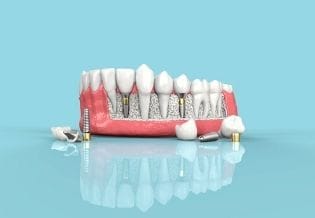Author Contributions
Academic Editor: Lolita Lopez, Oral Medicine, Oral Surgery and Implantology Unit, Faculty of Medicine and Dentistry, Entrerríos s/n, Santiago de Compostela, Spain
Checked for plagiarism: Yes
Review by: Single-blind
Copyright © 2019 José Ricardo Kina, et al.
 This is an open-access article distributed under the terms of the Creative Commons Attribution License, which permits unrestricted use, distribution, and reproduction in any medium, provided the original author and source are credited.
This is an open-access article distributed under the terms of the Creative Commons Attribution License, which permits unrestricted use, distribution, and reproduction in any medium, provided the original author and source are credited.
Competing interests
The authors have declared that no competing interests exist.
Citation:
Introduction
The periodontium is constituted of different tissue: the gingiva, alveolar bone, cementum, and periodontal ligament. Each tissue of the periodontium can exert different specialized functions and the main ones are those of protection, sustentation, defense, nutrition, cell renewal, neural 1. The cementum and alveolar bone are hard tissues which gingival and periodontal ligament fibers anchor a tooth into its alveolar socket 2. The periodontal ligament is a strong connective tissue structure, presenting neural components and a vascular system, which support and distribute occlusal forces during masticatory function 1, 2. To support and distribute occlusal forces the periodontal ligament presents a hydrodynamic balance which works inducing not only occlusal forces distribution but also an efficient turn over to modify the structure of the periodontal bone that in addition to absorbing occlusal forces may restructure the architecture of the periodontal bone according with the forces applied during masticatory process 3, 4, 5. During masticatory process the forces applied by masticatory muscle induce the mandible movement causing the lower teeth to crush the food bolus against the maxillary antagonist teeth. The force applied against the teeth is directed to the periodontal ligament and needs to be dissipated efficiently. The dissipation of the occlusal forces is mainly accomplished through the hydrodynamic equilibrium determined by the extra cellular fluids of the periodontal ligament. When occlusal forces are applied against the teeth, they undergo a movement of intrusion limited by the fibers constituted by the strong connective tissue structure of the periodontal ligament 2. The intrusive movements of the teeth compress the extracellular fluids of the periodontal ligament directly against the alveolar bone which penetrate through the Volkmann canals and Haversian system into the medullary bone. After the occlusal force ceased, the periodontal ligament resumes its origin size, producing a tensile force in the extra cellular fluids which penetrated into the medullary bone, determining its return to the periodontal ligament 3. The compressive and the traction forces determined by the extra cellular fluid of the periodontal ligament during the action of the occlusal force on the teeth, causes the extracellular fluid movement of the periodontal ligament that travels between the periodontal ligament and the bone marrow determining the bone remodeling to support the action of the masticatory load. In this way the alveolar bone is always modifying its architectural structure depending on the incidence of force applied during the chewing cycle for each tooth involved in the process 5, 6. In spite of the regenerative potential of the periodontal ligament these bone remodeling is determined mainly in the bone marrow due to the intense source of vascularization and undifferentiated mesenchymal cells capable of restructuring the alveolar bone depending on the stimulus provided by the occlusal forces 5. Thus the alveolar bone undergoes intense transformation during the life of an individual, adapting the most different occlusal forces applied on the teeth.
References
- 1.Nyman S, Gottlow J, Karring T, Lindhe J. (1982) The regenerative potential of the periodontal ligament. , J Clin Periodontol 9(3), 257-65.
- 2.Rees J S, Jacobsen P H. (1997) Elastic modulus of the periodontal ligament. , Biomaterials 18(14), 995-9.
- 3.Beertsen W, CAG McCulloch, Sodek J. (2007) The periodontal ligament: a unique, multifunctional connective tissue. , Periodontol2000 13(1), 20-40.
- 4.Woodbury D, Schwarz E J, Prockop D J, Black I B. (2000) Adult rat and human bone marrow stromal cells differentiate into neurons. , J. Neurosci. Res 61, 364-370.
